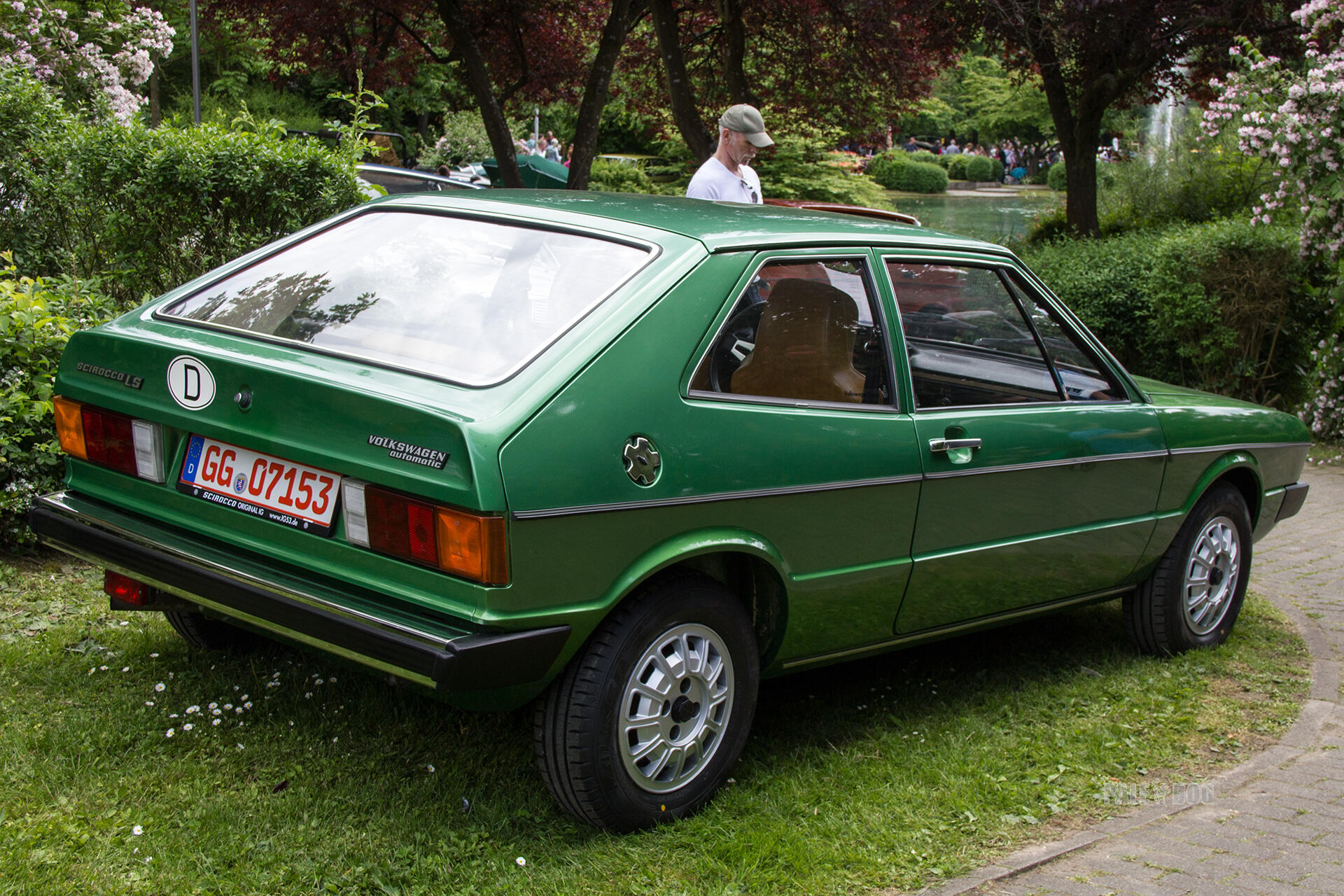Scirocco 1974

The year 1974 marked the debut of the Volkswagen Scirocco, a car that would go on to make a significant impact in the automotive world. Named after a Mediterranean wind, the Scirocco was designed to replace the aging Karmann Ghia. It brought a fresh, sporty look to Volkswagen's lineup, appealing to a younger audience looking for style and performance at an affordable price.
One of the key figures behind the Scirocco's creation was Italian designer Giorgetto Giugiaro, who had previously worked on iconic models such as the De Tomaso Mangusta and the Maserati Ghibli. His influence is evident in the sleek, angular lines and low profile of the Scirocco, which set it apart from other cars of its era. The design was not just about aesthetics; it also contributed to improved aerodynamics and fuel efficiency, which were becoming increasingly important in the wake of the 1973 oil crisis.
Underneath its stylish exterior, the Scirocco shared many components with the Volkswagen Golf, including its front-wheel-drive layout and various engine options. This commonality helped keep production costs down while ensuring reliable performance. The Scirocco's lightweight body and responsive handling made it a joy to drive, whether navigating city streets or taking on winding country roads. Its introduction was met with enthusiasm from both critics and consumers, cementing its place as a beloved classic in automotive history.
Design and Aesthetics
The Volkswagen Scirocco's design was revolutionary for its time. Giorgetto Giugiaro's touch brought a modern flair that combined sharp edges with smooth curves. The car's low-slung profile and wide stance gave it an aggressive look that appealed to sports car enthusiasts. The front end featured rectangular headlights and a narrow grille, which were signature elements of Giugiaro's design language.
Inside, the Scirocco offered a driver-focused cockpit with well-placed controls and comfortable seating. The minimalist dashboard was designed for functionality, with clear instrumentation and easy-to-reach switches. Despite its compact size, the interior space was utilized efficiently, providing ample room for passengers and cargo.
Performance and Engineering
The Scirocco was built on the same platform as the Volkswagen Golf, known for its robust engineering and reliability. Initially, it came with a range of four-cylinder engines, including a 1.1-liter and 1.5-liter option. These engines were mated to either a four-speed manual or a three-speed automatic transmission. While not exceptionally powerful by today's standards, these engines provided adequate performance for the time.
One of the standout features of the Scirocco was its handling. Thanks to its front-wheel-drive layout and well-tuned suspension, the car offered excellent grip and stability. It was agile in corners and provided a smooth ride on various road surfaces. The combination of lightweight construction and responsive steering made it particularly enjoyable for spirited driving.
Market Reception
The Volkswagen Scirocco received positive reviews from automotive journalists upon its release. Its combination of stylish design, practical engineering, and enjoyable driving dynamics made it a hit among consumers. Sales were strong in both Europe and North America, where it quickly gained a reputation as an affordable sports car alternative.
In addition to its success in showrooms, the Scirocco also made an impact on the racing scene. It competed in various motorsport events, including rallying and touring car championships. The car's lightweight construction and reliable performance made it a competitive choice in these disciplines.
Legacy and Influence
The Volkswagen Scirocco's influence can still be seen in modern automotive design. Its sleek lines and sporty proportions have inspired subsequent generations of coupes and hatchbacks. The success of the Scirocco also paved the way for other iconic models from Volkswagen, such as the Golf GTI and Corrado.
Collectors and enthusiasts continue to cherish the original Scirocco for its unique blend of style and performance. Well-preserved examples are highly sought after in the classic car market, often commanding premium prices at auctions. The car's enduring popularity is a testament to its timeless appeal.
Technical Specifications
| Specification | Details |
|---|---|
| Engine Options | 1.1L I4, 1.5L I4 |
| Transmission | 4-speed manual, 3-speed automatic |
| Layout | Front-engine, front-wheel drive |
| Power Output | 50-70 hp (depending on engine) |
| Curb Weight | Around 800 kg (1764 lbs) |
| Top Speed | Approximately 100 mph (160 km/h) |
| 0-60 mph (0-100 km/h) | Around 12 seconds (varies by model) |
| Production Years | 1974-1981 (Mk1) |
Cultural Impact
The Scirocco holds a special place in automotive culture as one of Volkswagen's most beloved models from the 1970s. Its design has been featured in numerous films and television shows over the years, often symbolizing youthful energy and independence.
The car also fostered a dedicated community of enthusiasts who continue to celebrate its legacy through clubs, forums, and events. These gatherings provide opportunities for owners to showcase their vehicles, share restoration tips, and enjoy camaraderie with fellow fans.
The Volkswagen Scirocco 1974 remains an iconic model that has left an indelible mark on automotive history. Its innovative design by Giorgetto Giugiaro set new standards for style and aerodynamics in compact sports cars. Paired with reliable engineering borrowed from the Golf platform, it offered an engaging driving experience that won over both critics and consumers alike.
As we look back on this remarkable vehicle nearly five decades later, it's clear that the Scirocco's legacy endures not just through its influence on modern car designs but also through its passionate community of enthusiasts who keep its spirit alive. For anyone interested in classic cars or automotive history, the 1974 Scirocco is undoubtedly worth exploring further.